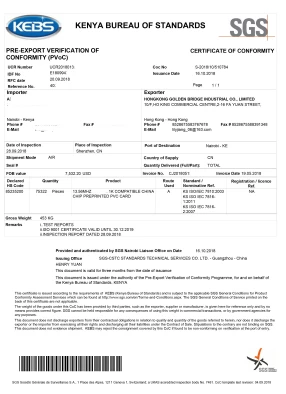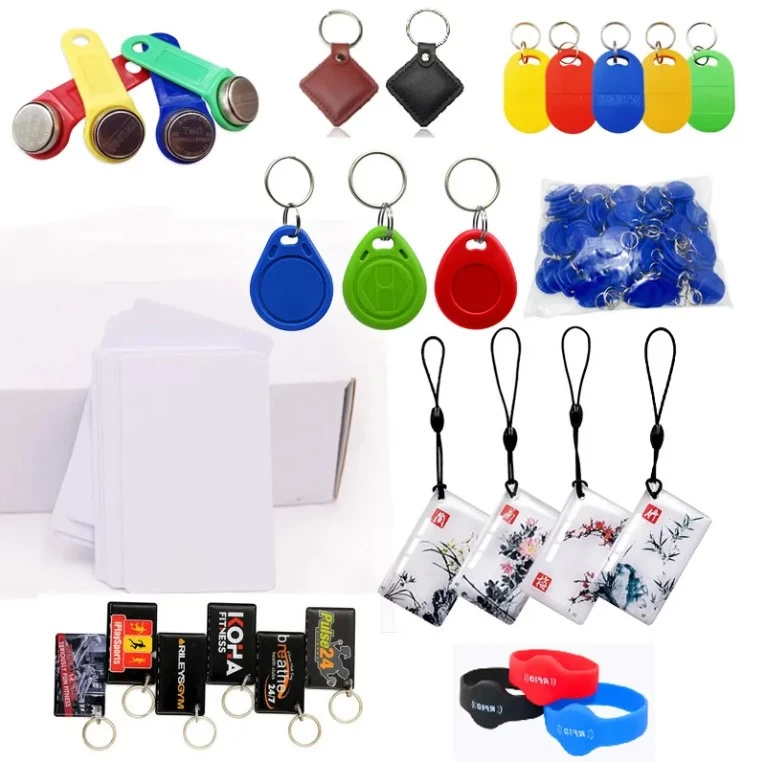Nike will introduce RFID as a new means of after-sales counterfeit detection
Lucy
2019-08-01 15:08:56
Nike will introduce RFID as a new means of after-sales counterfeit detection
The proliferation of counterfeit goods in the field of sneakers has always been very serious. And in the past, various official shoes have launched a number of ways to fight against counterfeit goods. In addition to litigation, claims, and coalition government crackdowns, many sneaker officials have put security buttons on their shoes, the most famous is the StockX's small green sign. However, what is embarrassing is that the counterfeiters simply copied the official anti-counterfeiting methods. Soon after the launch of SockX's small green card, a large number of high-imitation SockX green cards appeared on the market. If the anti-counterfeiting technology itself can't guarantee that it is genuine, how can it be anti-counterfeit?
Recently, Nike's "Air Jordan 1 Retro High OG "Court Purple" and "Air Jordan 1 Retro High OG "Pine Green" also used anti-theft buckles. But Nike's anti-theft buckle is different from all previous sneaker anti-theft buckles. This time, Nike's anti-theft buckle contains RFID tags and uses RFID technology.

Why does Nike use RFID to do anti-theft security?
There is a direct reason, Nike official website can provide return and exchange service, a group of Nike customers in the misplaced "replacement party", specialize in replacing the genuine shoes they receive with fake goods, and then go to the seller to exchange goods. Nike lacks effective or quick means of checking the authenticity of products. The official website after-sales personnel are not fully capable of identifying true and false, so the official website to prevent the replacement of fakes is weak, which makes many "replacement parties" can win.
After Nike used RFID anti-theft cards, it was difficult to have a large number of high-definition Nike anti-theft cards on the market.
It is actually very easy for the counterfeiters to make a security card that looks exactly the same. As long as the mold is made, it can be copied in large quantities, but if the RFID chip is embedded in the anti-theft card, it is difficult. It's useless to make a tag that looks exactly the same, because RFID can be set to prevent itself from being copied and cloned by others, and can only be read, not tampering
How is RFID anti-counterfeiting?
First, each RFID chip has a high threshold, each RFID chip has a globally unique UID, so the counterfeiters cannot get the corresponding UID chip.
Secondly, the information of each link of the product can be written into the RFID chip for storage, and the product can be traceable.
Thirdly, RFID can be made into fragile labels, which are mainly used in wine, jewelry, tea, health care products, etc. As long as the items are opened, the labels will be broken, and the counterfeiters cannot recycle them.
Fourth, using asymmetric encryption algorithm to get ciphertext, the ciphertext is not reversible, even if the forger obtains the unique global ID, it will not be able to crack ciphertext.
Fifth, especially the branch of RFID technology, NFC technology, on the basis of RFID has added some of its own stronger characteristics. The unique UID of 7 bytes is burned from the factory and cannot be changed. The ID number is unique. The data is burned after the writing is completed. No one (including the developer itself) can change it. It can only be read. Without authorization, unable to write, 32-bit key protection to prevent cracking, and set the key violence attack failure setting function. Assuming that it is set 3 times, the chip will be scrapped after trying 3 unsuccessful crack attempts.
Chip technology is one of the world's leading high-tech fields. Counterfeiters want to copy, the cost is very high, basically it will make the counterfeiters discouraged.
Back to Nike, actually looked at the characteristics of RFID anti-counterfeiting, and found that Nike has not really fully applied to RFID anti-counterfeiting, but just made a simple and convenient application for the staff to detect the authenticity of the returned shoes.
The sneaker market has been very chaotic, and a lot of fakes are flooding with it. Not only is the Nike fakes flooding, the Yeezy series of fakes is crazy. Although Nike has not done a better job of eliminating counterfeit goods, we have also seen the new direction of the sneaker industry against counterfeit goods from the anti-counterfeiting action taken by Nike. This may trigger the trend of application of RFID anti-counterfeiting technology in the field of sneakers.
The proliferation of counterfeit goods in the field of sneakers has always been very serious. And in the past, various official shoes have launched a number of ways to fight against counterfeit goods. In addition to litigation, claims, and coalition government crackdowns, many sneaker officials have put security buttons on their shoes, the most famous is the StockX's small green sign. However, what is embarrassing is that the counterfeiters simply copied the official anti-counterfeiting methods. Soon after the launch of SockX's small green card, a large number of high-imitation SockX green cards appeared on the market. If the anti-counterfeiting technology itself can't guarantee that it is genuine, how can it be anti-counterfeit?
Recently, Nike's "Air Jordan 1 Retro High OG "Court Purple" and "Air Jordan 1 Retro High OG "Pine Green" also used anti-theft buckles. But Nike's anti-theft buckle is different from all previous sneaker anti-theft buckles. This time, Nike's anti-theft buckle contains RFID tags and uses RFID technology.

Why does Nike use RFID to do anti-theft security?
There is a direct reason, Nike official website can provide return and exchange service, a group of Nike customers in the misplaced "replacement party", specialize in replacing the genuine shoes they receive with fake goods, and then go to the seller to exchange goods. Nike lacks effective or quick means of checking the authenticity of products. The official website after-sales personnel are not fully capable of identifying true and false, so the official website to prevent the replacement of fakes is weak, which makes many "replacement parties" can win.
After Nike used RFID anti-theft cards, it was difficult to have a large number of high-definition Nike anti-theft cards on the market.
It is actually very easy for the counterfeiters to make a security card that looks exactly the same. As long as the mold is made, it can be copied in large quantities, but if the RFID chip is embedded in the anti-theft card, it is difficult. It's useless to make a tag that looks exactly the same, because RFID can be set to prevent itself from being copied and cloned by others, and can only be read, not tampering
How is RFID anti-counterfeiting?
First, each RFID chip has a high threshold, each RFID chip has a globally unique UID, so the counterfeiters cannot get the corresponding UID chip.
Secondly, the information of each link of the product can be written into the RFID chip for storage, and the product can be traceable.
Thirdly, RFID can be made into fragile labels, which are mainly used in wine, jewelry, tea, health care products, etc. As long as the items are opened, the labels will be broken, and the counterfeiters cannot recycle them.
Fourth, using asymmetric encryption algorithm to get ciphertext, the ciphertext is not reversible, even if the forger obtains the unique global ID, it will not be able to crack ciphertext.
Fifth, especially the branch of RFID technology, NFC technology, on the basis of RFID has added some of its own stronger characteristics. The unique UID of 7 bytes is burned from the factory and cannot be changed. The ID number is unique. The data is burned after the writing is completed. No one (including the developer itself) can change it. It can only be read. Without authorization, unable to write, 32-bit key protection to prevent cracking, and set the key violence attack failure setting function. Assuming that it is set 3 times, the chip will be scrapped after trying 3 unsuccessful crack attempts.
Chip technology is one of the world's leading high-tech fields. Counterfeiters want to copy, the cost is very high, basically it will make the counterfeiters discouraged.
Back to Nike, actually looked at the characteristics of RFID anti-counterfeiting, and found that Nike has not really fully applied to RFID anti-counterfeiting, but just made a simple and convenient application for the staff to detect the authenticity of the returned shoes.
The sneaker market has been very chaotic, and a lot of fakes are flooding with it. Not only is the Nike fakes flooding, the Yeezy series of fakes is crazy. Although Nike has not done a better job of eliminating counterfeit goods, we have also seen the new direction of the sneaker industry against counterfeit goods from the anti-counterfeiting action taken by Nike. This may trigger the trend of application of RFID anti-counterfeiting technology in the field of sneakers.


























